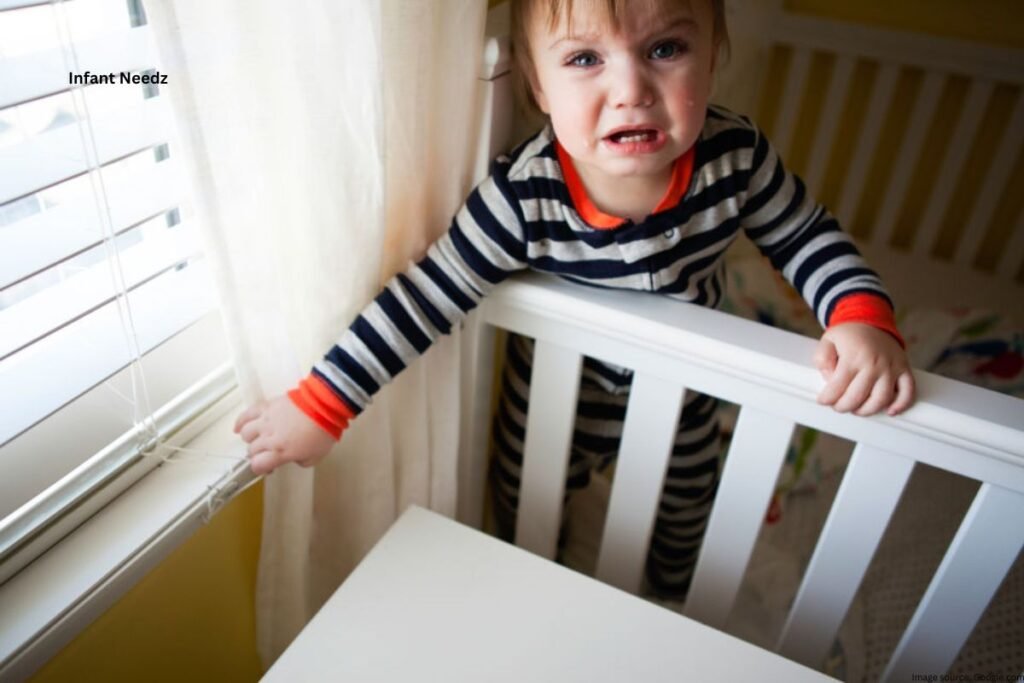Sleep Disturbances and Solutions, Disorders related to sleep in infants and young children can be utterly disruptive to their well-being and developmental processes, as well as the family dynamic. Diagnosis of symptoms of a sleep disorder and how to implement other beneficial changes can help your child achieve better quality of sleep. Here is a step-by-step guide to signs of common sleep disturbances and practical solutions for parents.
Table Of Contents
Identifying Sleep Disorders In Children
Sleep disturbances can come out in numerous ways in infants and young children and will then have many implications in the overall well-being and family dynamics. Vigilance, coupled with the recognition of the issues at an early stage, is very important to ensure that your child receives restorative sleep needed for healthy growth and development.

Common Indications Of Sleep Disorders
Some of the common symptoms that may present themselves include frequent nocturnal awakenings, sleep at night insomnia, and excessive daytime somnolence. Parents can often comment on the child’s occurrence of nightmares and night terrors, sleep walking or heavy snoring. The sooner the parent becomes aware of these symptoms, the better the prospects of minimizing the underlying problems before they become alarming.
Sleep Disorders Indicators
- Co- and Repeated Night Wakings: If a child wakes for periods at night, without returning to sleep, this is considered included as a sleep disturbance. Of course, normal babies wake at times; it’s the consistencies that matter.
- Failure to sleep: If a child cannot fall asleep within more than three hours or even more than 30 minutes, it may indicate some problem. This usually happens due to anxiety, discomfort, and less consistency in bedtime routines.
- Extreme daytime sleepiness: Any child who is excessively fatigued, irritable, or whimpering in the daytime is likely sleeping insufficiently at night. Besides controlling his mood, behavior, and ability to concentrate, quality sleep will make the child wake up fresh, renewed, and rejuvenated in the morning.
- Snoring or Respiratory Problem: If your child snores or breathes episodically at night, then this might indicate a number of problems and one of these may be sleep apnea. Then, your child is deprived of proper rest and should be managed and assessed by a health provider.

Overcoming Sleep Problems
- Establish a bedtime routine: A soothing bedtime routine may have sent all of the comforting messages to your child. Well, it may well have signaled that sleep time was coming. Bathtime, reading, and singing lullabies create safety and predictability. All these help in promoting sleep in children.
- Set a sleep schedule: This can be achieved by sleeping at roughly the same time every day during the week-including Saturdays and Sundays. This will schedule his life internally and help him rest soundly as well as wake up feeling fresh.
- Create a Cozy Sleep Space: Give him or her a soft mattress and a comfortable level of room temperature. Allow the room to be quiet and dark by installing blackout curtains and using a white noise machine, so there will be few disruptions during sleep.
- Limit Screen Time Before Bed: You’ll make it much harder for your child to fall asleep if you strictly limit the screen usage. Then, you can establish a routine for sleep and keep screen usage out of the way for an hour before bed. Alternatively, you can have your child read or draw.
Practical Solutions For Better Sleep
Quality to sleep can be added by a practical solution. For example, the assimilation of a bedtime routine, regular sleep schedule, and a sleep-friendly environment reduces all disturbances that may occur during sleep. Monitoring food and drink intake before time can also ensure that nights are restful.
Calming Bedtime Routine
A calming sleep time routine would tell the kids it is time to wind down. Some of the things which might aid in a child sleeping well include reading a story, taking a warm bath, or being rocked could keep the infants asleep better. This familiarity might make them feel secure and anxiety-free at the time of sleep. This security and safety will facilitate good sleep for children.
Conclusion
Knowing what to look for concerning sleep disorder in children is very important as far as their good being is concerned. Solutions would include keeping a regular bedtime regimen, provision of a good sleep environment, and follow-up on activities of the day.
All these will help significantly with quality sleep in children. If the situation persists, not a bad idea would be to see a healthcare professional who could advise support and strategies based upon your child’s specific needs. Healthy sleep habits result in happier, healthier kids, and a harmonious family life.
FAQ’s
How to cure from sleeping disorders?
Diagnostic: Determine a consistent bedtime. A sleep-conducive environment. Limit accumulation of screen time near bedtime. Avoid caffeine in the evening. If it does not have a favorable effect, seek expert advice from a medical practitioner.
What are the Symptoms of Disrupted Sleep?
Some of the more common symptoms associated with disrupted sleep include night awakenings that occur quite frequently, difficulty in being able to fall asleep at night, heightened daytime sleepiness, irritability, and nocturnal snoring or breathing patterns that are not normal. Other examples of sleep disruptions may include nightmares or night terrors.
